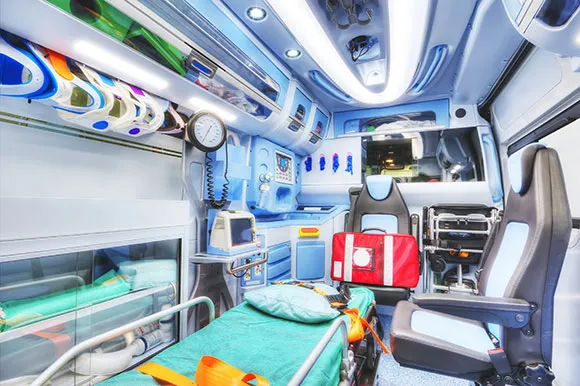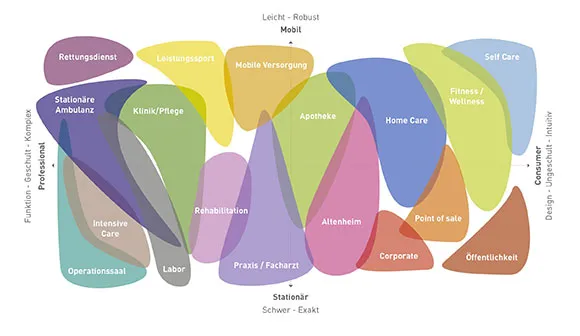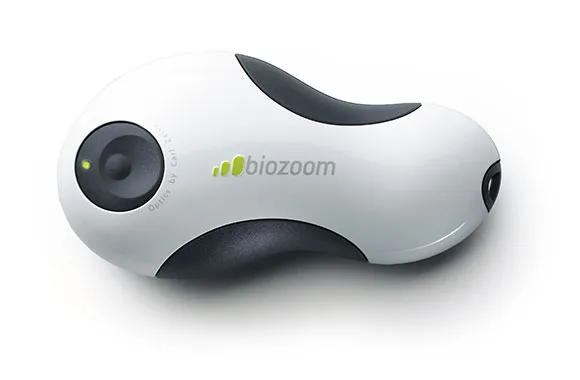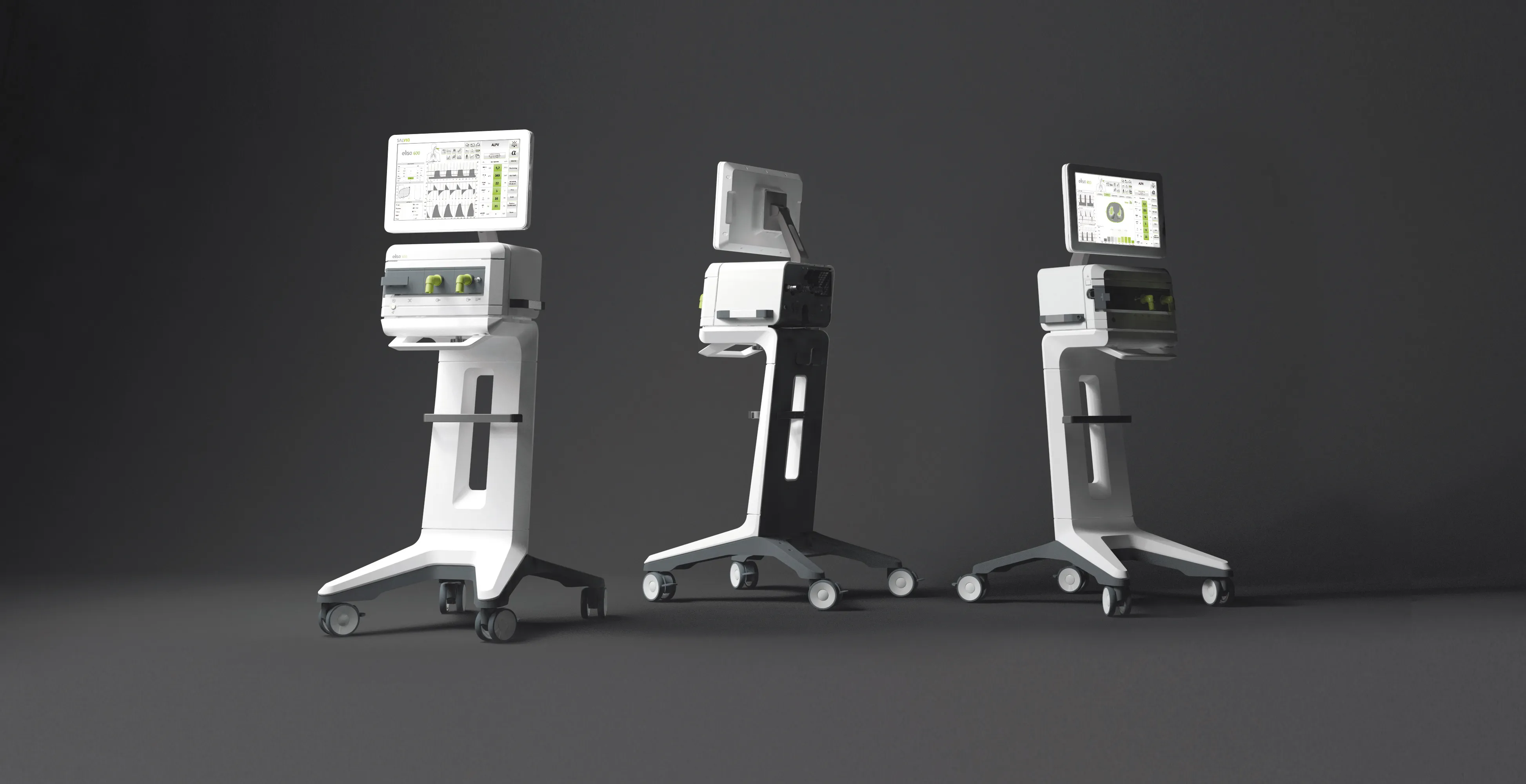Expertise
Point of Care (PoC) diagnostics - Medical Trend No. 1
In recent years, innovative technologies have created almost limitless potential for point-of-care solutions. The possibility of patient-oriented treatment, examinations and diagnostics will mean that medical services will no longer be bundled in hospitals or doctors' surgeries in the future, but will be much more widely distributed: Diagnostic examinations in pharmacies or fitness studios will no longer be a rarity - and may soon conquer supermarkets.

Point-of-care is therefore one of the latest trends in medical technology and is therefore one of our topics in the Medical Design Trend Update. But how can this triumphant advance be explained? And what effects does the penetration of medical products into previously unknown contexts have?
The laboratory "to go"
Medical technology is constantly moving closer to the point of care (PoC). Progressive miniaturization and digitalization in particular are paving the way for this: ever smaller and lighter, yet more powerful components are making previously stationary laboratory and medical technology small and mobile. Some of the new devices can be networked with a smartphone or tablet, with which they can be controlled and easily operated, as we are familiar with their use from everyday life.
As technology advances, people's curiosity about the many possibilities of self-tracking is growing. They want to be able to make a diagnosis about their own well-being without having to go to the waiting room or laboratory: It is not the person who goes to the doctor, but the medical devices that come to them. However, this does not only include the patient's home - the point of care can be located in a retirement home, a public building or a pharmacy. Wherever a medical intervention is needed - and this is also how some providers refer to "point of need".
If you want to be healthy, you have to measure
Older or chronically ill people - such as diabetics or asthmatics - as well as fitness and health-oriented people can find out about their well-being by measuring their vital parameters. The trend towards self-measurement is therefore not only due to demographic developments and the increase in chronic illnesses, but also goes hand in hand with a new health awareness.
Clinical thermometers and blood pressure monitors, which pioneered the point-of-care trend when they were introduced into private households in the 1990s, had to contend with skepticism from doctors for a long time. Not safe enough, lack of precision - these were the opinions of medical professionals. Over the last few years, home care devices have been able to shed this poor image, paving the way for the point-of-care trend. On the one hand, this is based on technical developments, for example in biotechnology, data transmission, networking and miniaturization.
On the other hand, consumer acceptance of the solutions has risen sharply. According to the mobile analytics service Flurry, the use of health and fitness apps has risen by 330% since 2014, meaning that trust in digitalized support appears to be correspondingly high.
Design follows context: complex or intuitive, difficult or easy?
The requirements that the design of a PoC solution must meet are determined not least by the place of use. In our design research, we differentiate between 18 different contexts in which PoC devices are used today, from emergency medicine to self-care in people's own homes. In addition to the premises, the typical people and roles as well as the work processes play a key role. If the PoC device is used by the emergency services, in an operating room or in rehabilitation and therefore by trained personnel, the devices are significantly more complex and function-oriented than those used in the patient's home environment.
Here, the focus is more clearly on a modern, aesthetic and, in special cases, even customizable design. Intuitive usability is also more important in the private environment than in professional applications.
Whether private or professional, heavy or light, functional or trendy - the answer to elementary design questions is preceded by a thorough analysis of the PoC context.

Rapid diagnosis and self-tracking: a blessing or a curse?
Innovative technological developments are constantly revealing a wide range of opportunities for PoC solutions, so that even those from outside the industry are sensing the chance to tap into new markets. Technical progress opens up many opportunities to gain a foothold.
However, whether the products can assert themselves on the market depends, among other things, on whether they are perceived by clinical staff as making work easier or by private users as useful and to what extent the costs are reimbursed by health insurance companies. Otherwise, there is a risk that only a small section of society will be able to afford more health, further reinforcing the two-tier society that already exists in this area.
The advantages of the new patient-oriented systems, on the other hand, are enormous: blood tests that previously had to be carried out in a laboratory can now be performed directly at the patient's bedside. This saves the patient waiting time or even an inpatient stay. In addition, smaller clinics in particular do not have an in-house laboratory, meaning that more than just hours can pass between sampling and diagnosis, which can have serious consequences in acute cases.
The increasingly precise and innovative PoC solutions also offer emergency doctors and sports physicians the opportunity to respond even more appropriately to accidents: For example, they can use a mobile ultrasound to make a reliable diagnosis directly on site and initiate appropriate measures. As the PoC systems are also generally available at a lower cost than the stationary device, medical practices can also equip themselves with examination devices that would otherwise have shied away from these costs.
Quick and painless: tests determine blood sugar levels, MRSA germs or antioxidants

The range of PoC solutions is constantly growing. The possibilities expand with every technical innovation. The company Biozoom from Kassel, for example, has developed a stand display for pharmacies or other service points where customers can scan their hand to check their antioxidants, which are responsible for fighting free radicals in the body, among other things. You can read the interview with Biozoom Managing Director Hardy Hoheisel, who is one of the pioneers in the field of health tracking at the point of care, in the current Trend Report to read the interview.
In addition to prevention and the need for a healthier lifestyle, PoC solutions can also quickly provide certainty about acutely necessary information: A non-invasive method for measuring blood glucose, for example, was developed by the Frankfurt start-up DiaMonTech. After countless established companies have already tried their hand at this and Google has developed a contact lens with a measuring chip, a solution now seems to be on the horizon: as early as next year, the Glucobox will use a laser to provide over 400 million diabetics worldwide with not only painless but also more precise values than the current commercially available measuring solutions, so that doctors can better adapt medication to their patients.
In future, it should also be possible to identify antibiotic-resistant pathogens directly at the point of care. The Freiburg-based start-up SpinDiag is developing a screening system that identifies high-risk patients on admission to hospital - in just 30 minutes instead of two to three days as was previously the case. Affected patients can thus be isolated directly, reducing the risk of infection for other patients.
Learnings Point of Care
- People don't have to go to medicine, medical devices come to people.
- As technology advances, people's curiosity about the increasing self-tracking possibilities is growing.
- The patient-oriented systems shorten waiting times until the results are available. In some cases, they save the patient a stay in hospital. More reliable diagnoses can be made at the scene of the accident.
- The PoC systems are often cheaper than the stationary devices, making them affordable for doctors' surgeries or smaller hospitals.

Tell us what you think!
We would like to know what observations or opinions you have on the subject, so we would be delighted to receive your questions, feedback and suggestions for discussion (by e-mail to trendupdate18@wilddesign.de).
All trends in medical design at a glance
From PoC to usability - you can find many more trends from the field of medical design in our current Medical Design Trend Update.
Frequently asked questions




